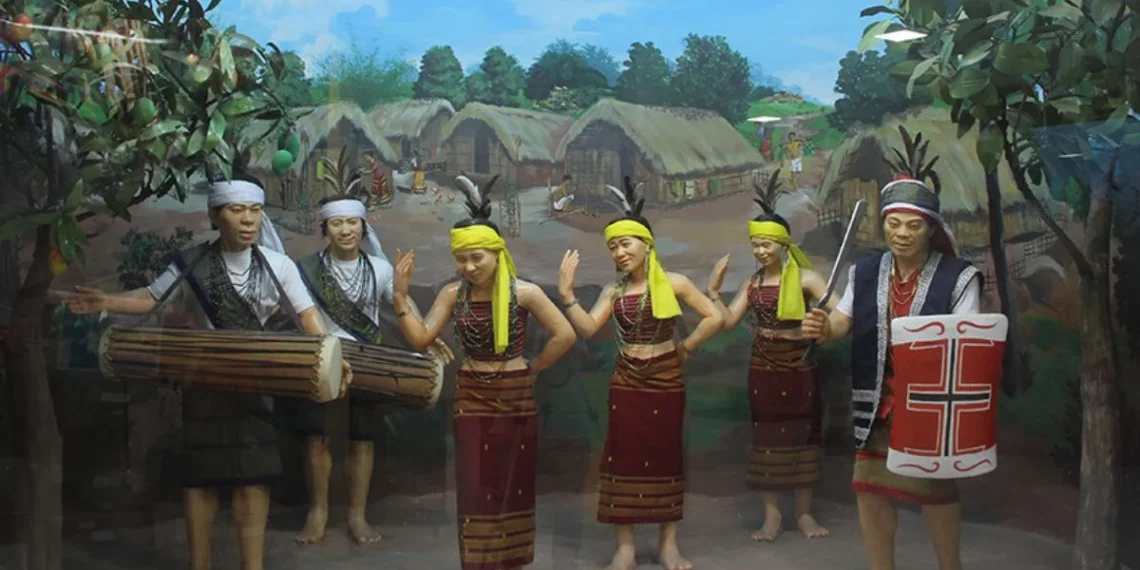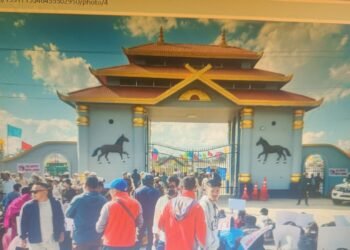The 1917–1919 Anglo-Kuki War, fought against British conscription, stands as one of India’s largest anti-colonial tribal uprisings, disproving claims of recent migration.
BY Benjamin Mate
In recent decades, a false narrative has been promoted by some Naga and Meitei political actors claiming that the Kuki people of Manipur are refugees from Burma (Myanmar).
This propaganda selectively cites a small number of Kuki households expelled from Burma in the 1960s while ignoring two key facts:
- Burma’s mass expulsions were not targeted at the Kukis. After General Ne Win’s 1962 coup, the Burmese government expelled hundreds of thousands of people of Indian origin. The Government of India’s Ministry of External Affairs (MEA) records that over 200,000 people of Indian origin were deported between 1963 and 1970. Official statements acknowledge that about 144,353 Burmese repatriates returned to India by June 1963, while 300,000 Indians and 100,000 Chinese were driven out after the coup. The expulsions included Tamils, Gorkhas, Deshwalis, Nagas, Meiteis, and Kukis — so isolating the Kukis is historically dishonest.
- More Nagas and Meiteis live in Myanmar than Kukis. The Naga Self-Administered Zone in Myanmar’s Sagaing Division alone houses about 120,000 people, and Naga organisations estimate half a million Nagas across about 390 villages in Myanmar. Meiteis are classified by the Burmese government as a sub-group of the Chin people. By contrast, the Kuki-Chin population in Myanmar numbers around 250,000 — fewer than the Naga population — yet Kukis are singled out as “refugees” while larger migrant communities are not.
The narrative that all Kukis are refugees serves a political purpose. Labelling an indigenous community as foreign allows anti-Kuki extremists to justify land seizures, violence, and discrimination. Such propaganda must be confronted with historical data from colonial records and government documents.
READ: Imphal Valley Terror Groups Linked to China, Pakistan?
READ: Kuki Outfit Kowtows Before Muivah, Architect of 1990s Bloodshed
Colonial Alliances and the Anglo-Kuki War (1917–1919)
Collaboration by Naga and Meitei elites
During the colonial period, the British often relied on cooperation from local rulers to pacify the hills. Meitei elites cooperated with British forces. In 1871–72, Maharaja Chandrakirti of Manipur sent about 2,000 Meitei soldiers to support the British punitive expedition against the Chin-Kuki-Zo people, known as the Lushai Expedition. This collaboration enabled the British to suppress resistance and led to the defeat of Zou (Zomi) leader Goukhothang.
Many Naga groups also served the British. During the First World War, the British recruited Naga labourers for the Labour Corps, fostering a pan-Naga identity. Naga levies were later used as scouts and auxiliaries during the Anglo-Kuki War, assisting British columns in navigating the hills and suppressing Kuki villages.
The Anglo-Kuki War: Facts from British records
The Anglo-Kuki War (1917–1919) — often mislabelled in colonial documents as the “Kuki Rebellion” — was a war of indigenous resistance. It erupted when British officials demanded that Kuki chiefs supply 2,000 men for the Labour Corps to serve in France during World War I. The Kuki chiefs refused, viewing conscription as an affront to their autonomy, and declared war.
Scale of the war
British government correspondence describes the uprising as one of the largest frontier operations in eastern India before World War II. Prof. Jangkhongam Doungel, citing colonial records, notes that the British deployed 6,234 combatants from the Assam Military Police (later Assam Rifles) and the Burma Military Police, supported by 696 non-combatants and 7,650 transport carriers. According to the Chief Commissioner of Assam, the Kuki rising spread over 6,000 square miles of rugged hills. Colonel L.W. Shakespear recorded that it required continuous active service by 2,400 Assam Rifles and 3,000 Burma Military Police for one and a half years.
Casualties and cost
British wartime reports reveal the human and economic cost of the campaign:
- British casualties: 60 dead (including one British officer), 142 wounded (including three British officers), and 97 deaths from disease.
- Transport carriers: Only seven coolies were killed, indicating that Kuki fighters avoided harming porters.
- Kuki casualties: Colonial records estimate 120 Kuki fighters killed. British troops burned 126 villages, forcibly deserted 16 villages, and coerced 140 villages to surrender. They confiscated 1,158 guns from the Kukis.
- Financial cost: The British Government of India spent about ₹28 lakhs on the campaign — an enormous sum at the time. Sir Robert Reid later observed that the war cost many lives and significantly strained the colonial treasury.
These figures show that the Anglo-Kuki War was a major military operation involving thousands of troops, extensive logistics, and heavy financial expenditure. The war lasted two years and five months, making it longer than many other tribal uprisings in colonial India.
Aftermath and British admissions
Following the war, the British imposed punitive measures on the Kuki population, including penal labour and war reparations of ₹175,000. The Chief Commissioner of Assam later acknowledged that the Kukis were “more sinned against than sinning” and that the rebellion could have been avoided had officials treated them with dignity.
Post-colonial Continuity: Kukis as Indigenous People, Not Refugees
Demographic facts
Census projections show that more than 1.1 million Kuki-Zo people live in India’s Manipur, Mizoram, and adjoining states, with settlements in Churachandpur, Kangpokpi, Tengnoupal, Chandel, Pherzawl, and parts of Senapati and Ukhrul. Kukis are recognised as Scheduled Tribes under the Indian Constitution, and their status was affirmed in 1950 — well before any refugees from Burma arrived. A Factly fact-check clarifies that only a small number of Kuki families fled Myanmar during the 1967 Khadawmi operation, and that the majority of Kukis in Manipur have lived there for centuries.
Repatriation statistics
Indian government records show that the number of Kuki households repatriated from Burma was small compared with other communities. The MEA estimates that just a few thousand Kukis were among the 200,000-plus Indian-origin repatriates. By contrast, large numbers of Meiteis and Nagas remain in Myanmar without being labelled refugees; Naga organisations report about 500,000 Nagas across 390 villages, while the Naga Self-Administered Zone alone has 120,000 inhabitants.
Indigenous continuity and cross-border identity
The Kuki–Chin–Mizo peoples are a trans-border indigenous nation whose homeland spans the hills of northeast India, Myanmar’s Chin State, and Bangladesh’s Chittagong Hill Tracts. Their oral traditions and colonial ethnographies — such as J. Shakespear’s The Lushei-Kuki Clans — attest to their settlement in these hills long before colonial boundaries existed. They share linguistic and cultural ties that predate both the Indian and Burmese nation-states.
Why the Refugee Narrative Is Dangerous
The attempt to portray the entire Kuki community as refugees is a deliberate distortion aimed at denying them their indigenous rights. British and Indian government records show that:
- The Anglo-Kuki War was a major anti-colonial uprising, not a minor “rebellion”; the British had to deploy thousands of troops, suffered significant casualties, and spent ₹28 lakhs to suppress it.
- More Nagas and Meiteis live in Burma than Kukis, and the few Kuki families expelled from Burma do not justify branding a million-strong indigenous people as foreigners.
- Kukis have been recognised as Scheduled Tribes in Manipur since 1950 and have inhabited the region for centuries.
The propaganda portraying Kukis as “stateless refugees” is therefore not only factually incorrect but also serves to justify persecution, land seizures, and ethnic violence. Accurate historical data from British and Indian records highlight the Kuki people’s long-standing presence, their resistance to colonial oppression, and the continued relevance of their indigenous rights.
(The writer is Chairman of Kuki Organisation for Human Rights Trust.)













